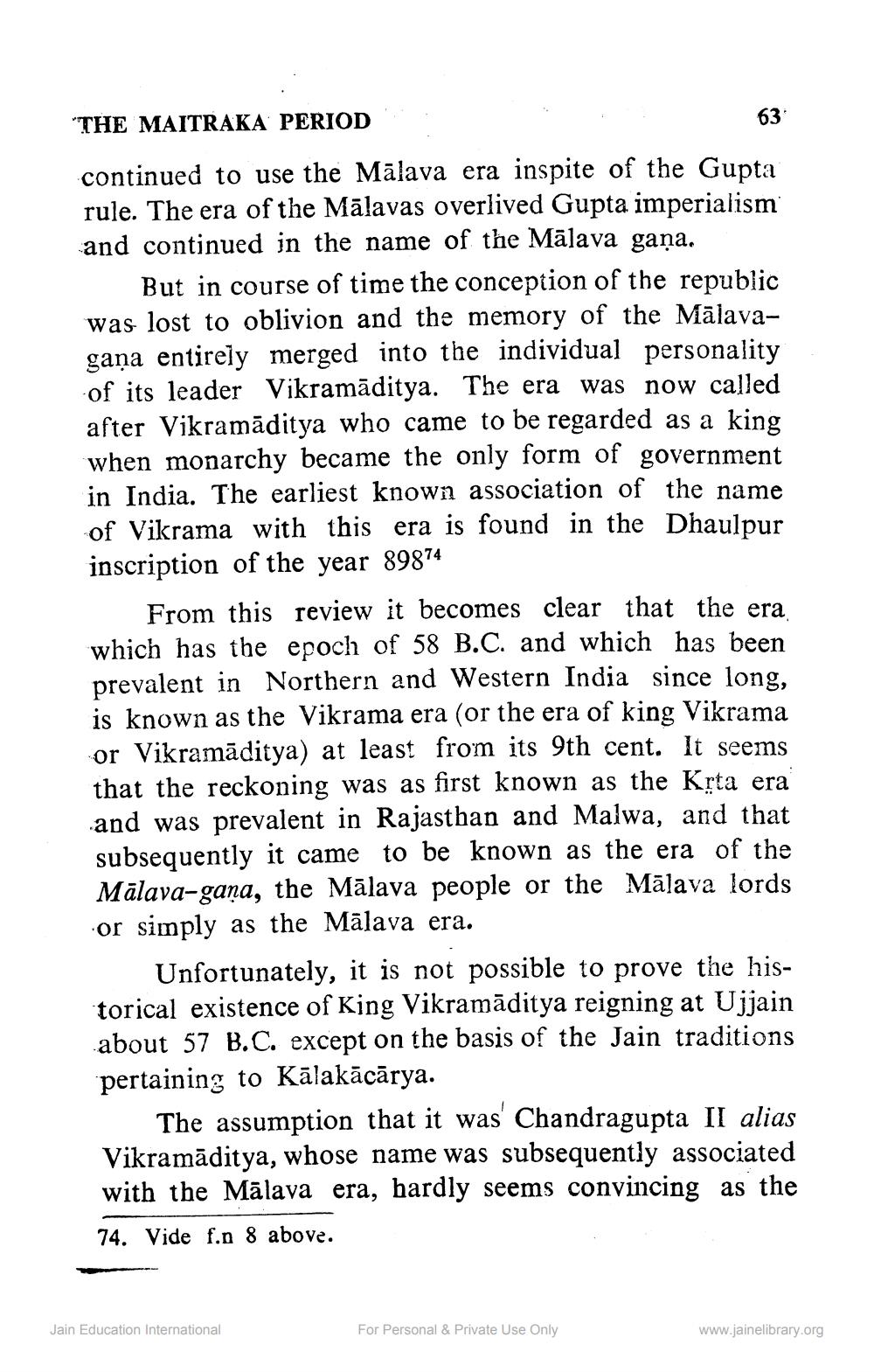________________
THE MAITRAKA PERIOD
63 continued to use the Mālava era inspite of the Gupta rule. The era of the Mālavas overlived Gupta imperialism and continued in the name of the Mālava gaņa.
But in course of time the conception of the republic was lost to oblivion and the memory of the Mālavagana entirely merged into the individual personality of its leader Vikramāditya. The era was now called after Vikramāditya who came to be regarded as a king when monarchy became the only form of government in India. The earliest known association of the name of Vikrama with this era is found in the Dhaulpur inscription of the year 89874
From this review it becomes clear that the era which has the epoch of 58 B.C. and which has been prevalent in Northern and Western India since long, is known as the Vikrama era (or the era of king Vikrama or Vikramāditya) at least from its 9th cent. It seems that the reckoning was as first known as the Krta era and was prevalent in Rajasthan and Malwa, and that subsequently it came to be known as the era of the Mālava-gana, the Mālava people or the Mālava lords or simply as the Mālava era.
Unfortunately, it is not possible to prove the historical existence of King Vikramāditya reigning at Ujjain about 57 B.C. except on the basis of the Jain traditions pertaining to Kālakācārya.
The assumption that it was' Chandragupta II alias Vikramāditya, whose name was subsequently associated with the Mālava era, hardly seems convincing as the 74. Vide f.n 8 above.
Jain Education International
For Personal & Private Use Only
www.jainelibrary.org




